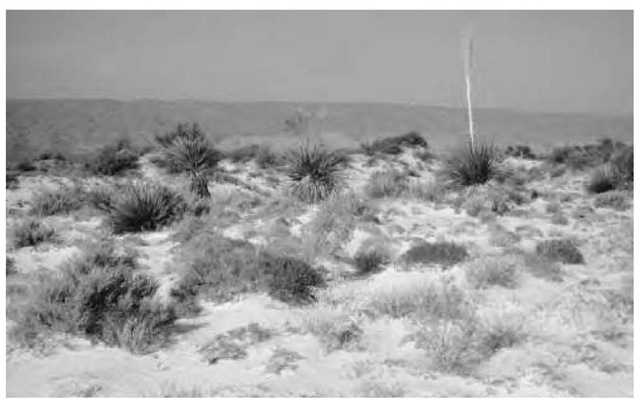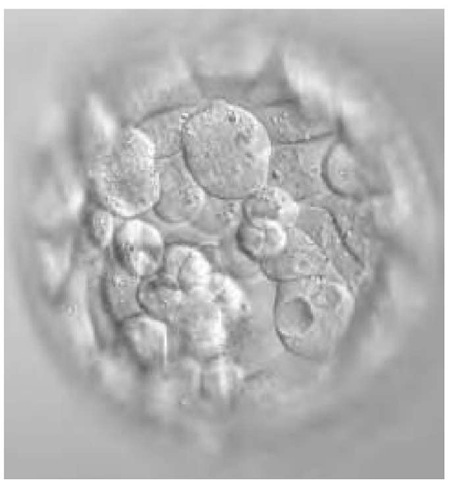Binomial (binomial name) Each organism is named using a Latin-based code consisting of a combination of two names, the first being a generic (genus) name and the second a specific trivial name, which, together,constitute the scientific name of a species. Lupinus perennis, or wild blue lupine, is an example. Both names are italicized, and both names used together constitute the species name. This is an example of the binomial nomenclature, critical to the system of classification of plants and animals. Linnaeus, a Swedish naturalist, developed the system in the 18 th century. The hierarchy lists the smallest group to largest group: species, genus, family, order, class, division, and kingdom. The first person to formally describe a species is often included, sometimes as an abbreviation, when the species is first mentioned in a research article (e.g., Lupinus perennis L., where L. = Linnaeus, who first produced this binomial name and provided an original description of this plant).
Binuclear Less frequently used term for the IUPAC recommended term dinuclear. See also nuclearity.
Bioassay A procedure for determining the concentration, purity, and/or biological activity of a substance (e.g., vitamin, hormone, plant growth factor, antibiotic, enzyme) by measuring its effect on an organism, tissue, cell, enzyme, or receptor preparation compared with a standard preparation.
Bioavailability The availability of a food component or a xenobiotic to an organ or organism.
Biocatalyst A catalyst of biological origin, typically an enzyme.
Bioconjugate A molecular species produced by living systems of biological origin when it is composed of two parts of different origins, e.g., a conjugate of a xenobi-otic with some groups, such as glutathione, sulfate, or glucuronic acid, to make it soluble in water or compartmentalized within the cell.
Bioconversion The conversion of one substance to another by biological means. The fermentation of sugars to alcohols, catalyzed by yeasts, is an example of bioconversion.
Biodiversity (biological diversity) The totality of genes, species, and ecosystems in a particular environment, region, or the entire world. Usually refers to the variety and variability of living organisms and the ecological relationships in which they occur. It can be the number of different species and their relative frequencies in a particular area, and it can be organized on several levels, from specific species complexes to entire ecosystems or even molecular-level heredity studies.
Bioenergetics The study of the energy transfers in and between organisms and their environments and the regulation of those pathways. The term is also used for a form of psychotherapy that works through the body to engage the emotions and is based on the work of Wilhelm Reich and psychiatrist Alexander Lowen in the 1950s.
Biofacies A characteristic set of fossil fauna. Facies is a geological term that means "aspect" and is used for defining subdivisions based on an aspect or characteristic of a rock formation, such as lithofacies, based on physical characteristics, or biofacies, based on the fossil content.
Biogeochemical cycles Both energy and inorganic nutrients flow through ecosystems. However, energy is a one-way process that drives the movement of nutrients and is then lost, whereas nutrients are cycled back into the system between organisms and their environments by way of molecules, ions, or elements. These various nutrient circuits, which involve both biotic and abiotic components of ecosystems, are called biogeo-chemical cycles. Major biogeochemical cycles include the water cycle, carbon cycle, oxygen cycle, nitrogen cycle, phosphorus cycle, sulfur cycle, and calcium cycle. Biogeochemical cycles can take place on a cellular level (absorption of carbon dioxide by a cell) all the way to global levels (atmosphere and ocean interactions).
The carbon cycle, one of the main biogeochemical cycles that processes and transfers nutrients from organisms to their environment.
These cycles take place through the biosphere, litho-sphere, hydrosphere, and atmosphere.
Biogeographic boundary (zoogeographical region)Six to nine regions that contain broadly similar fauna. Consists of Nearctic, Palearctic, Neotropical, Aethiopi-an, Oriental, and Australian, and some include Holarc-tic, Palaeotropical, and Oceana.
Biogeography The study of the past and present distribution of life.
Bioisostere (nonclassical isostere) A compound resulting from the exchange of an atom or of a group of atoms with another broadly similar atom or group of atoms. The objective of a bioisosteric replacement is to create a new compound with similar biological properties to the parent compound. The bioisosteric replacement can be physicochemically or topologically based.
Bioleaching Extraction of metals from ores or soil by biological processes, mostly by microorganisms.
Biological clock The internal timekeeping that drives or coordinates a circadian rhythm.
Biological control (integrated pest management) Using living organisms to control other living organisms (pests), e.g., aphids eaten by lady beetles.
Biological half-life The time at which the amount of a biomolecule in a living organism has been reduced by one half.
Biological magnification (bioaccumulation) The increase in the concentration of heavy metals (e.g., mercury) or organic contaminants (e.g., chlorinated hydrocarbons [CBCs]) in organisms as a result of their consumption within a food chain/web. An excellent example is the process by which contaminants such as polychlorinated biphenyls (PCBs) accumulate or magnify as they move up the food chain. For example, PCBs concentrate in tissue and internal organs, and as big fish eat little fish, they accumulate all the PCBs that have been eaten by everyone below them in the food chain.
Biological species A population or group of populations whose members can interbreed or have the potential to interbreed. See also species.
Bioluminescence The process of producing light by a chemical reaction by a living organism, e.g., glowworms, fireflies, and jellyfish. Usually produced in organs called photopores or light organs, biolumines-cence can be used for luring prey or as a courting behavior.
Biomass The dry weight of organic matter in unit area or volume, usually expressed as mass or weight of a group of organisms in a particular habitat. The term also refers to organic matter that is available on a renewable basis such as forests, agricultural crops, wood and wood wastes, animals, and plants.
Biome A large-scale recognizable grouping, a distinct ecosystem, that includes many communities of a similar nature that have adapted to a particular environment. Deserts, forests, grasslands, tundra, and the oceans are biomes. Biomes have changed naturally and moved many times during the history of life on Earth. In more recent times, change has been the result of human-induced activity.
Biomembrane Organized sheetlike assemblies, consisting mainly of proteins and lipids (bilayers), that act as highly selective permeability barriers. Biomembranes contain specific molecular pumps and gates, receptors, and enzymes.
Biomimetic Refers to a laboratory procedure designed to imitate a natural chemical process. Also refers to a compound that mimics a biological material in its structure or function.
Biomineralization The synthesis of inorganic crystalline or amorphous mineral-like materials by living organisms. Among the minerals synthesized biologically in various forms of life are fluorapatite (Ca5(P04)3F), hydroxyapatite, magnetite (Fe304), and calcium carbonate (CaC03).
Biopolymers Macromolecules, including proteins, nucleic acids, and polysaccharides, formed by living organisms.
Bioprecursor prodrug A prodrug that does not imply the linkage to a carrier group, but results from a molecular modification of the active principle itself. This modification generates a new compound, able to be transformed metabolically or chemically, the resulting compound being the active principle.
Cuatracienagas dunes in Mexico showing an example of the biodiversity of plants found in the xeric conditions of gypsum sands and deserts.
Biosensor A device that uses specific biochemical reactions mediated by isolated enzymes, immunosys-tems, tissues, organelles, or whole cells to detect chemical compounds, usually by electrical, thermal, or optical signals.
Biosphere The entire portion of the Earth between the outer portion of the geosphere (the physical elements of the Earth’s surface crust and interior) and the inner portion of the atmosphere that is inhabited by life; it is the sum of all the planet’s communities and ecosystems.
Biotechnology The industrial or commercial manipulation and use of living organisms or their components to improve human health and food production, either on the molecular level (genetics, gene splicing, or use of recombinant deoxyribonucleic acid [DNA]) or in more visible areas such as cattle breeding.
Biotic Pertains to the living organisms in the environment, including entire populations and ecosystems.
Biotransformation A chemical transformation mediated by living organisms or enzyme preparations. The chemical conversion of substances by living organisms or enzyme preparations. See also bioconversion.
Bivalve A mollusk having two valves or shells that are hinged together, e.g., mussels and clams.
Blastocoel The fluid-filled cavity that forms in the center of the blastula embryo. The blastula is an early stage in the development of an ovum, consisting of a hollow sphere of cells enclosing the blastocoel. See also blastula.
Light micrograph of a human embryo at the blastocyst stage. This early blastocyst is about four days old, appearing as a hollow ball of cells. On around day six, the embryo will begin to implant into the wall of the uterus. Magnification unknown.
Blastocyst An embryonic stage in mammals; a hollow ball of 30-150 cells produced one week after fertilization in humans. It is a sphere made up of an outer layer of cells called the trophectoderm, a fluid-filled cavity called the blastocoel, and a cluster of cells on the interior called the inner cell mass. It is the inner cell mass that becomes what is known as the fetus.
Blastopore The opening of the archenteron (primitive gut) in the gastrula that develops into the mouth in protostomes (metazoans such as the nema-todes, flatworms, and mollusks that exhibit determinate, spiral cleavage and develop a mouth from the blastopore) and the anus in deuterostomes. (Animals such as the chordates and echinoderms in which the first opening in the embryo becomes the anus, while the mouth appears at the other end of the digestive system.)
Blastula Early stage of animal development of an embryo, where a ball forms consisting of a single layer of cells that surrounds the fluid-filled cavity called the blastocoel. The term blastula is often used interchangeably with the term blastocyst.
Bleomycin (BLM) A glycopeptide molecule that can serve as a metal-chelating ligand. The Fe(III) complex of bleomycin is an antitumor agent, and its activity is associated with DNA cleavage.
Blood Blood is an animal fluid that transports oxygen from the lungs to body tissues and returns carbon dioxide from body tissues to the lungs through a network of vessels such as veins, arteries, and capillaries. It transports nourishment from digestion, hormones from glands, carries disease-fighting substances to tissues, as well as wastes to the kidneys. Blood contains red and white blood cells and platelets that are responsible for a variety of functions, from transporting substances to fighting invasion from foreign substances. Some 55 percent of blood is a clear liquid called plasma. The average adult has about five liters of blood..



